An 1836 Classic Head $5 with no sticker
It seems that a number of us are showing off our Classic Head gold, so here is one of my recent purchases. This 1836 $5 is graded MS-61. It has P-L surfaces with some friction on the obverse and what amounts to a Choice Mint State reverse. As usual my photography emphasizes every flaw. This looks much better in person. The auction catalog description said that the piece has the appearance of a higher grade piece, and for once they were correct.
The 1836 is the second most common date in the date in the set, but I think that it is a good deal harder to find than the 1834 Plain 4 variety. I don't know if JA would like this one or not, but I do.
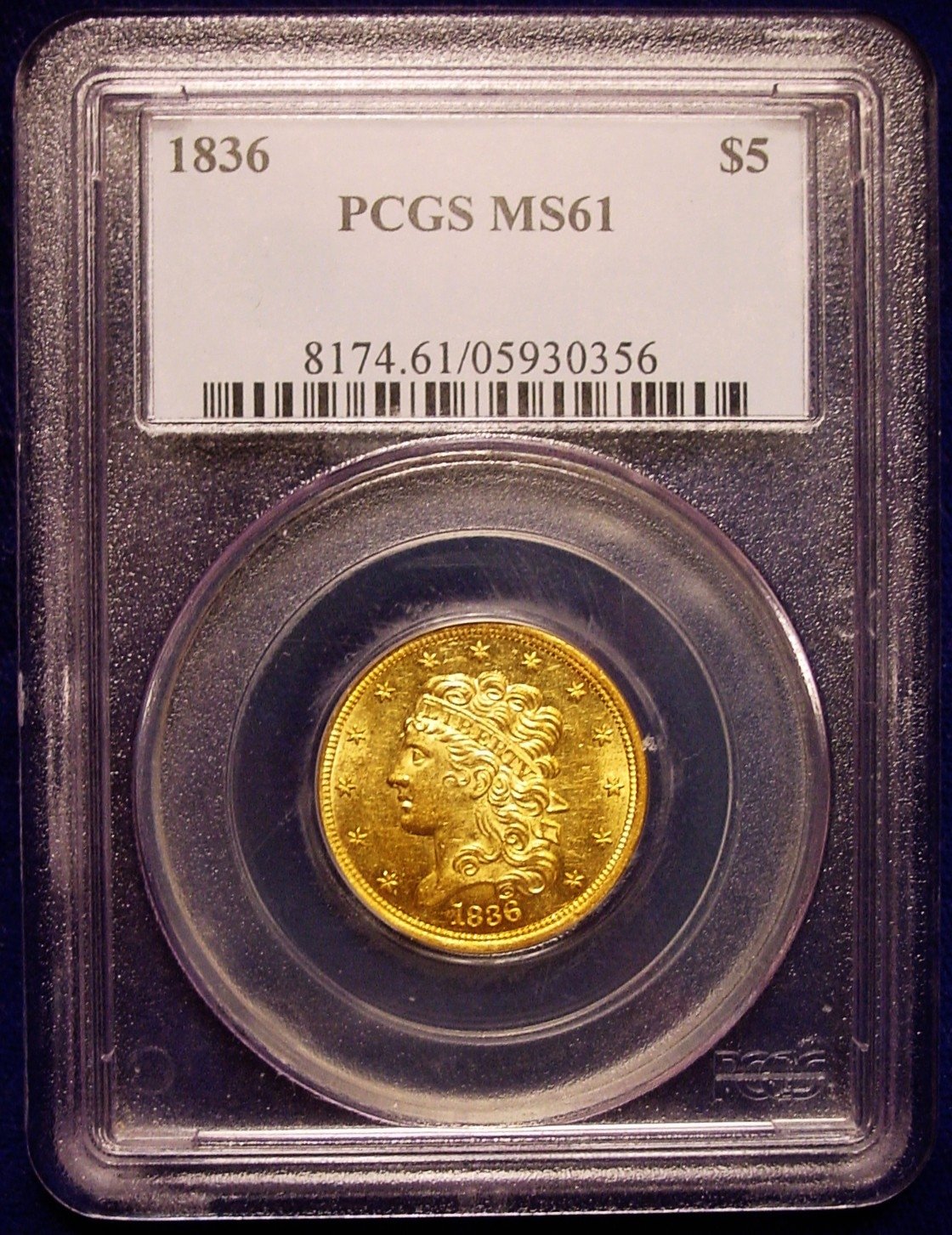
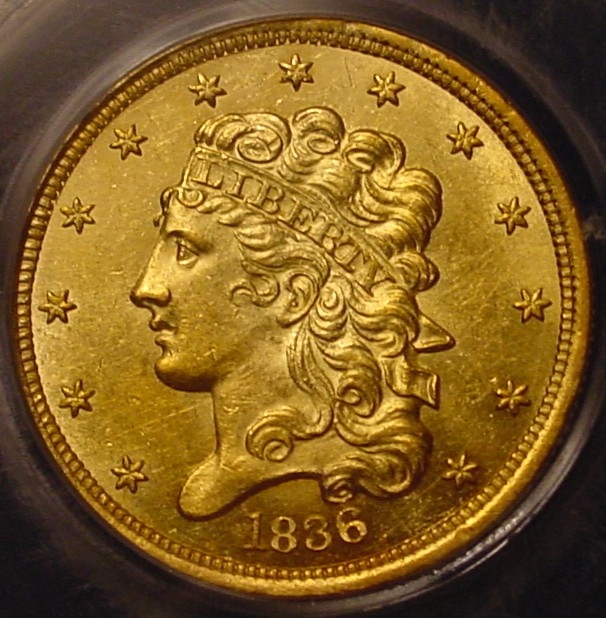
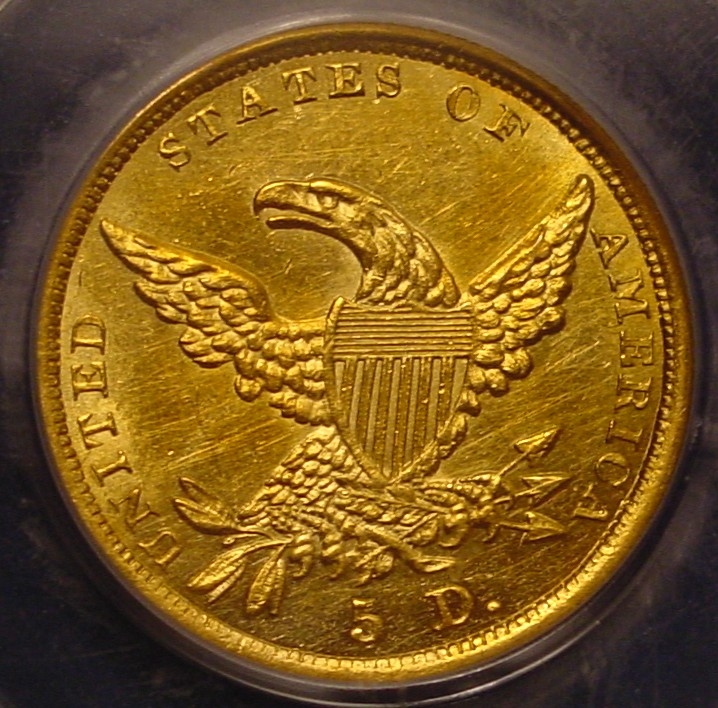
Retired dealer and avid collector of U.S. type coins, 19th century presidential campaign medalets and selected medals. In recent years I have been working on a set of British coins - at least one coin from each king or queen who issued pieces that are collectible. I am also collecting at least one coin for each Roman emperor from Julius Caesar to ... ?
5
Comments
Amazing how different the obverse looks in the two images. The slab photo looks like a 61, the obverse only photo looks better, at least 1 point better. I have to say 61 sounds low unless it's market graded AU++ piece.
This goes to an interesting grading argument. Which is the bigger sin - a technical Unc. with a bunch of big, ugly bag marks or a technical AU with the slightest rub? Some collectors don't like the term, but this provides a legitimate case for "market grading."
Nice flashy coin and JA likes natural color
I don't think market grading is at all new and TPG has been on board from the start, although not as bad.
If market grading wasn't used the MS pops would be far, far different than they are.
I should have added that I believe in market grading and some of my favorites have been market graded.
My half disme in an OGH that has a small punch mark. strong VF-30 details graded VG10 (not a details coin).
Very obviously net graded!
BTW< my wife loved the coin and wouldn't let me walk away from the table
I agree with your assessment as it does appear to be a bit better than the assigned grade suggests. Great looking piece and a nice score.
First blush looks like a solid MS coin, but the hairlines on the reverse may be the reason for the '61 grade. Not sure if JA would be down with that..
When you see the coin in person, the reverse is actually better than the obverse. I would not hesitate to grade the reverse MS-62 or 63.
Nice gold... I think the magnification and lighting is making the hairlines more obvious than they would be in hand... Cheers, RickO
ANA grading standards limit hairlined coins to low Unc.; sometimes coins with nice eye appeal get netted down instead of being called "improperly cleaned".
i am pretty sure if you submitted that raw now...it would grade UNC details. they didn't have that grade then...so they called it ms61...a market value grade.
I'm sorry, but you are off base on that observation. As I said before, the hairlines hardly show when you see the coin in person. My photos show the worst of the coin most of the time. In some ways this coin is more attractive than the MS-63 graded 1838-D I have. That coin is tied with the Pogue for the finest known.
Here are two sets of pictures. My pictures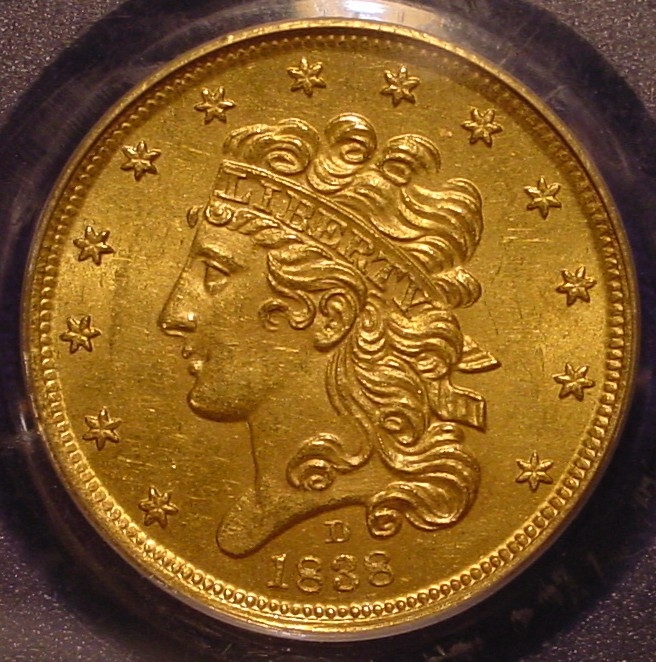
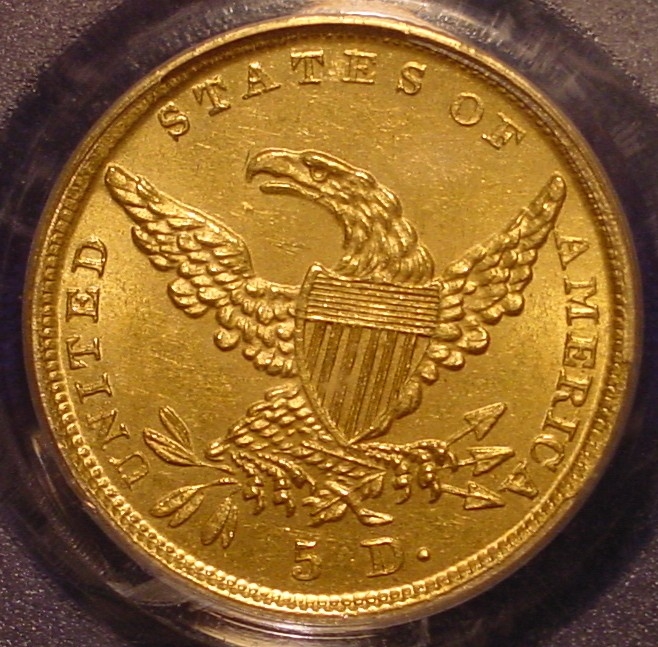
first.
Herirage auction pictures.
there's no way you're going to convince me the 36 looks as good as the 38-D. that's a nice looking coin!
Sell me that 38-D !!!
Not really fair to compare the P mint Classic Gold to their branch mint cousins...your 1838-D is a super looking coin compared to 99% of that date...the 1834-1838 Philadelphia half eagles were very well struck...and higher grade examples are quite affordable...your 1836 is a great example....congratulations on the new pick up!!!
Graded a 61 when the coin was a 61. If you were lucky enough to see a coin graded like that, then you could buy it and know that there was no virtually no downside.
Actually the quality of the strike between the two is very similar. The Dahlonega Mint got it right on their first just as the Charlotte Mint got it right on the 1838-C Quarter Eagle. Both the 1838-C Quarter Eagle and the 1838-D Half Eagle were just as well made or better than their Philadelphia Mint counterparts. The Charlotte Mint did not do as well with the 1838-C Half Eagle.
In later issues the quality did fall, sometimes considerably at the Charlotte and Dahlonega Mints.